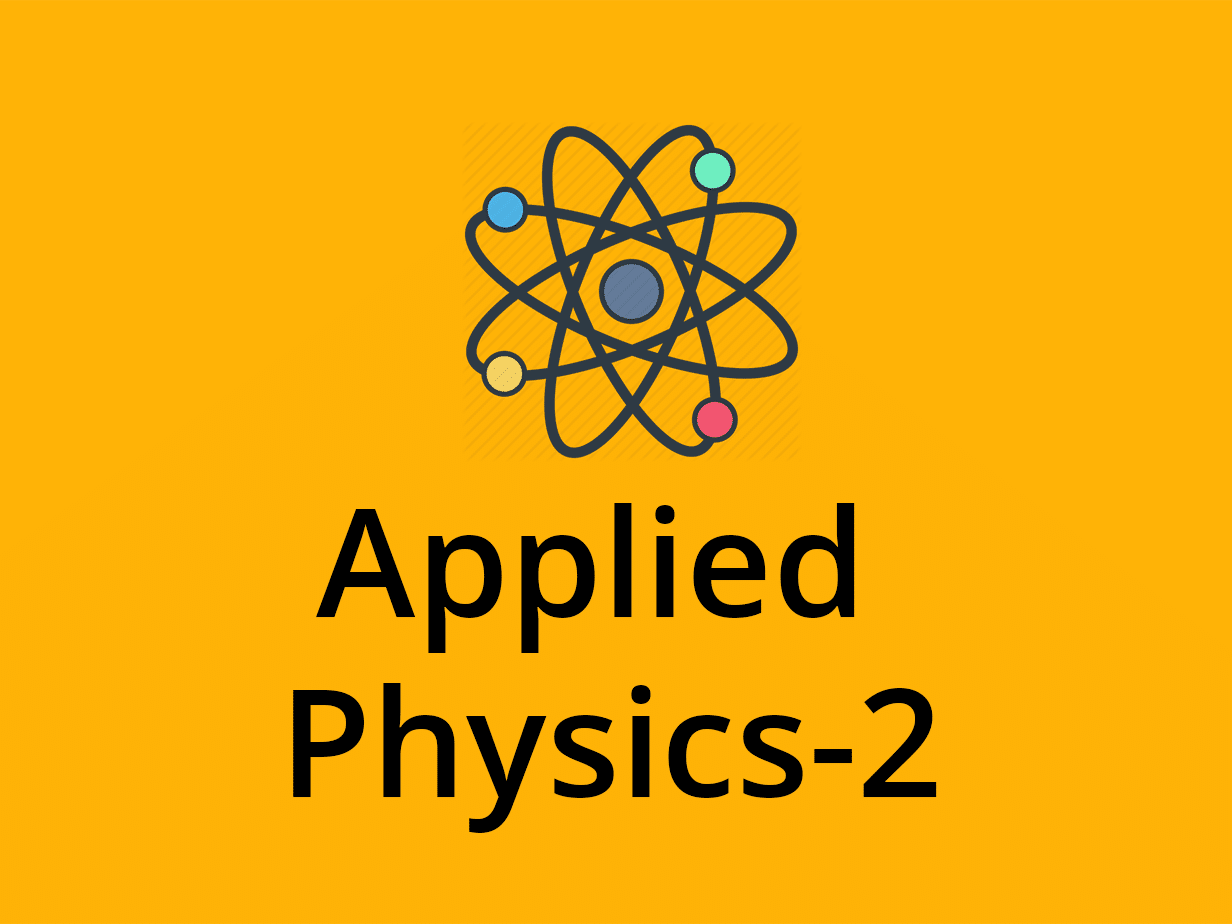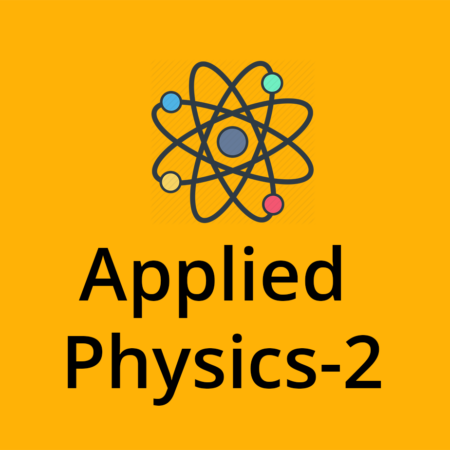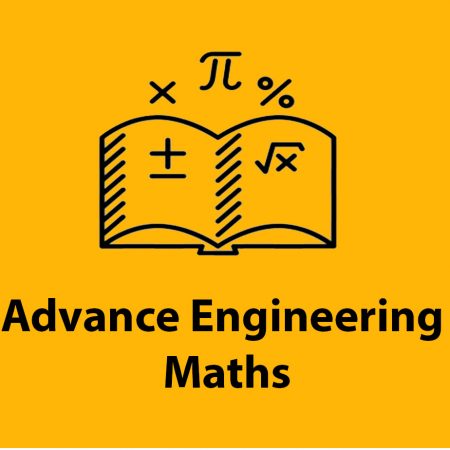Engineering Physics [RTU]
Free

-
Laser
- Laser introduction and characteristics
- Absorption,Emission and Einstein Coefficient
- Population inversion,Meta-stable state,Pumping in Laser
- Laser system,Pumping scheme in Laser
- HE-NE laser
- NDYAG and CO2 Laser
- Introduction to Applied Physics 2
- Semiconductor Laser
- Application of Laser
- Optical fiber introduction ,total internal reflection,acceptance angle in Laser
- ND: YAG Laser with Full Working
- Semiconductor Laser with Full Working
-
Coherence and Optical Fibre
-
Semiconductor
Applied Physics 2
Applied Physics 2 is semester 2 subject in first year of engineering under Mumbai University. Objectives for the subject Applied Physics – II to impart knowledge of basic concepts in applied physics. To provide the knowledge and methodology necessary for solving problems in the field of engineering.
Outcomes for the subject Applied Physics 2 Learner will be able to comprehend principles of interference and diffraction. Illustrate the principle, construction and working of various LASERs and its applications. Identify various applications of optical fibers. Comprehend the concepts of electrodynamics and Maxwell’s equations and their use in telecommunication systems. Apply the concepts of electromagnetism in focusing systems and CRO. Comprehend the significance of nanoscience and nanotechnology, its applications. Module INTERFERENCE AND DIFFRACTION OF LIGHT consist of the following subtopics Interference by division of amplitude and by division of wave front; Interference in thin film of constant thickness due to reflected and transmitted light; origin of colours in thin film; Wedge shaped film(angle of wedge and thickness measurement); Newton’s rings Applications of interference – Determination of thickness of very thin wire or foil; determination of refractive index of liquid; wavelength of incident light; radius of curvature of lens; testing of surface flatness; Anti-reflecting films and Highly reflecting film. Diffraction of Light Fraunhoffer diffraction at single slit, Fraunhoffer diffraction at double slit, Diffraction Grating, Resolving power of a grating, dispersive power of a grating Application of Diffraction – Determination of wavelength of light with a plane transmission grating.
Applied physics is the application of physical theories to problem-solving. It is the use of theoretical knowledge of the properties of physical bodies with the intention of achieving a particular technological or practical goal. It is also usually considered to be a bridge or a connection between physics and engineering. A laser is a device that emits light through a process of optical amplification based on the stimulated emission of electromagnetic radiation. The term “laser” originated as an acronym for “light amplification by stimulated emission of radiation”. The first laser was built in 1960 by Theodore H. Maiman at Hughes Research Laboratories, based on theoretical work by Charles Hard Townes and Arthur Leonard Schawlow. Nanotechnology is the use of matter on an atomic, molecular, and supramolecular scale for industrial purposes. The earliest, widespread description of nanotechnology referred to the particular technological goal of precisely manipulating atoms and molecules for fabrication of macroscale products, also now referred to as molecular nanotechnology. A more generalized description of nanotechnology was subsequently established by the National Nanotechnology Initiative, which defined nanotechnology as the manipulation of matter with at least one dimension sized from 1 to 100 nanometers. This definition reflects the fact that quantum mechanical effects are important at this quantum-realm scale, and so the definition shifted from a particular technological goal to a research category inclusive of all types of research and technologies that deal with the special properties of matter which occur below the given size threshold. It is therefore common to see the plural form “nanotechnologies” as well as “nanoscale technologies” to refer to the broad range of research and applications whose common trait is size.
Module LASERS consist of the following subtopics Quantum processes as absorption, spontaneous emission and stimulated emission; metastable states, population inversion, pumping, resonance cavity, Einsteins’s equations; Helium Neon laser; Nd:YAG laser; Semiconductor laser, Applications of laser- Holography (construction and reconstruction of holograms) and industrial applications(cutting, welding etc), Applications in medical field 04 03 FIBRE OPTICS Total internal reflection; Numerical Aperture; critical angle; angle of acceptance; Vnumber; number of modes of propagation; types of optical fiber; Losses in optical fibre(Attenuation and dispersion) Applications of optical fibre – Fibre optic communication system; sensors (Pressure, temperature, smoke, water level), applications in medical field.
Module ELECTRODYNAMICS consist of the following subtopics Cartesian, Cylindrical and Spherical Coordinate system, Scaler and Vector field, Physical significance of gradient, curl and divergence, Determination of Maxwell’s four equations. Applications-design of antenna, wave guide, satellite communication etc. Module CHARGE PARTICLE IN ELECTRIC AND MAGNETIC FIELDS consist of the following subtopics Fundamentals of Electromagnetism, Motion of electron in electric field (parallel ,perpendicular, with some angle); Motion of electron in magnetic field (Longitudinal and Transverse); Magnetic deflection; Motion of electron in crossed field; Velocity Selector; Velocity Filter, Electron refraction; Bethe’s law; Electrostatic focusing; Magnetostatic focusing; Cathode ray tube (CRT);Cathod ray Oscilloscope (CRO) Application of CRO: Voltage (dc,ac), frequency, phase measurement.
Module NANOSCIENCE AND NANOTECHNOLOGY consist of the following subtopics Introduction to nano-science and nanotechnology, Surface to volume ratio, Two main approaches in nanotechnology -Bottom up technique and top down technique; Important tools in nanotechnology such as Scanning Electron Microscope, Transmission Electron Microscope, Atomic Force Microscope. Nano materials: Methods to synthesize nanomaterials (Ball milling, Sputtering, Vapour deposition, solgel), properties and applications of nanomaterials. References Books for the subject Applied Physics ‐II by Mumbai University are as follows A text book of Engineering Physics-Avadhanulu&Kshirsagar, S.Chand. Fundamentals of Optics by Jenkins and White, McGraw-Hill. Optics – Ajay Ghatak, Tata McGraw Hill. Concepts of Modern Physics- ArtherBeiser, Tata Mcgraw Hill. A textbook of Optics – N. Subramanyam and Brijlal, S.Chand. Engineering Physics-D. K. Bhattacharya, Oxfor. Concepts of Modern Physics- ArtherBeiser, Tata Mcgraw Hill. Classical Electodyamics J. D. Jackson, Wiley. Introduction to Electrodynamics- D. J. Griffiths, Pearson publication. Intoduction to Nanotechnology- Charles P. Poole, Jr., Frank J. Owens, Wiley India edition. Nano: The Essential – T. Pradeep, Mcgraw-Hill Education.
Prepare For Your Placements: https://lastmomenttuitions.com/courses/placement-preparation/
![]()
/ Youtube Channel: https://www.youtube.com/channel/UCGFNZxMqKLsqWERX_N2f08Q
Follow For Latest Updates, Study Tips & More Content!
Course Features
- Lectures 24
- Quizzes 0
- Duration 20 hours
- Skill level All levels
- Language Hindi
- Students 75
- Certificate No
- Assessments Yes


![WhatsApp Image 2020-06-26 at 12.15.45 PM Engineering Maths- 4 [All Branches] ( Videos + Handmade Notes ) AKTU](https://lastmomenttuitions.com/wp-content/uploads/2020/01/WhatsApp-Image-2020-06-26-at-12.15.45-PM.jpeg)


![WhatsApp Image 2021-04-11 at 4.55.25 PM (3) Engineering Maths 2 [RTU]](https://lastmomenttuitions.com/wp-content/uploads/2021/04/WhatsApp-Image-2021-04-11-at-4.55.25-PM-3-450x450.jpeg)
![WhatsApp Image 2021-04-11 at 4.55.25 PM Engineering Maths 1 [RTU]](https://lastmomenttuitions.com/wp-content/uploads/2021/04/WhatsApp-Image-2021-04-11-at-4.55.25-PM-450x450.jpeg)